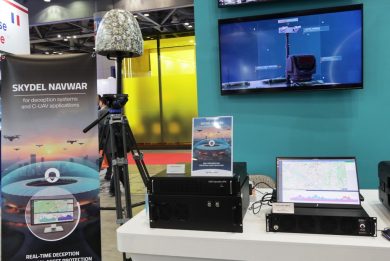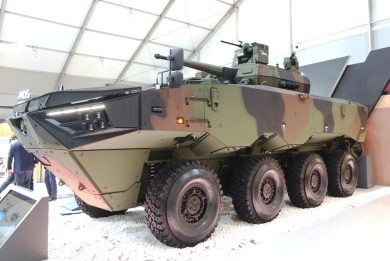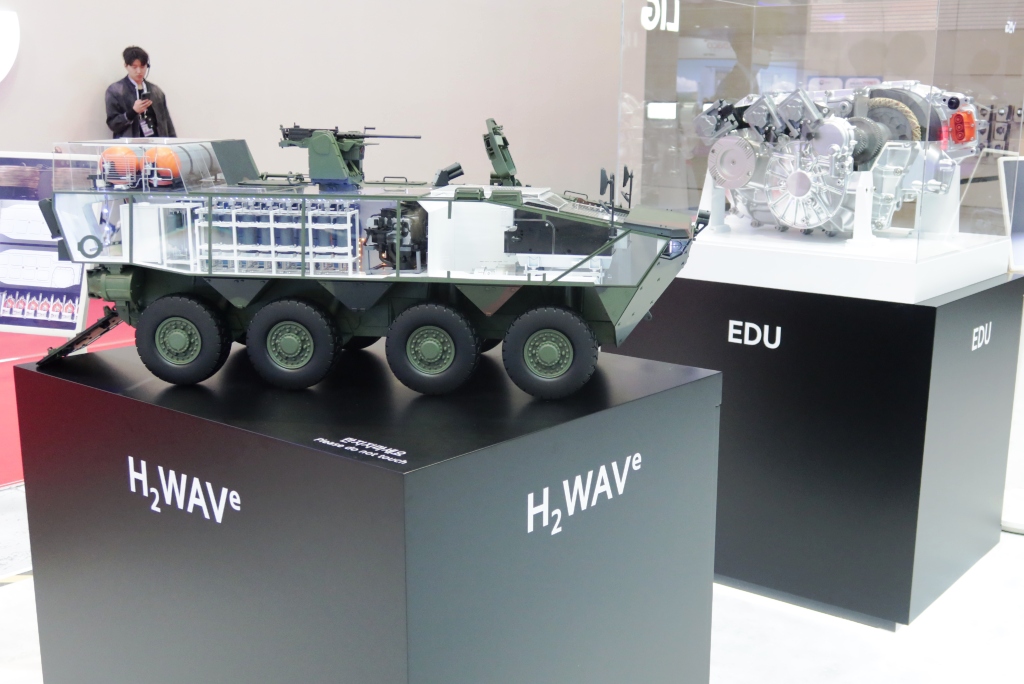
ADEX 2025 – Hyundai Rotem ready to test a hydrogen fuel cell hybrid 8×8 armoured vehicle technology demonstrator
Looking to alternative propulsion systems for future military platforms Hyundai Rotem is about to start trials of an 8×8 armoured vehicle powered by a hybrid powerpack, based on an electric motor and hydrogen fuel cells.
Propulsion systems are usually dual use systems, which can be used both for civilian as well as for military applications. In that big automotive groups have an edge on smaller companies, as they usually have dual production, hence R&D efforts may find applications in both fields. With the Hyundai Rotem’s Hydrogen Fuel Cell Tram being the most innovative project in terms of mobility, at ADEX 2025 the company exhibited the Black Veil, a hydrogen fuel cell-based unmanned wheeled 4×4 electric mobility platform which has a 350 km maximum range.
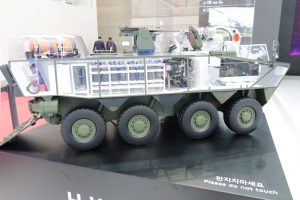
A downsized model was also exhibited of an 8×8 armoured vehicle fitted with a hybrid fuel cell powerpack, the H2WAVe, for Hydrogen Wheeled Armoured Vehicle electric. The powerpack is based on a 350 kW (470 hp) electric motor working at over 600 V powered by a set of batteries; these are recharged by two hydrogen fuel cells, located just behind the batteries.
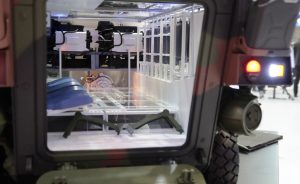
The space usually allowed for dismounts sees on the left side five seats for personnel, while on the right we find five cylinders containing sodium, a protected pod at the rear, over the vehicle roof, hosting two huge tanks containing hydrogen at 700 bar pressure. The system was developed by Hyundai Rotem’s advanced propulsion system development team. EDR On-Line understood that the H2WAVe should start mobility trials before year end, the plan being to continue them until late 2026 to gather as much experience as possible. The team is pretty aware of risks involved in using hydrogen on the battlefield, however this is the start of a project that does not look at short-term results, the target for having hydrogen based propulsion for military vehicles being around 2035-40, company sources told EDR On-Line.
The solution adopted provides a 19-23 hp/t power-to-mass ratio, the company K808 used for the development being fitted with a 420 hp diesel engine in its conventional configuration. EDR On-Line understood that the single-engine configuration was adopted for simplicity in this phase of the project, probably the most similar to the rail solutions developed in the civilian sector. In fact an electric powered propulsion system is probably better optimised using one motor per axle, a solution that gets rid of numerous mechanical elements.
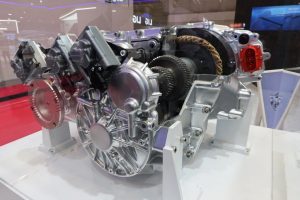
Hyundai Rotem is already considering this, an Electric Drive Unit, EDU in short, being visible in real beside the H2WAVe model. It is fitted with differential lock, parking lock, and motors can be disconnected for example for power saving, when the vehicle travels at constant speed on horizontal surfaces, the 8×8 becoming an 8×4, with only the front and rear axles powered.
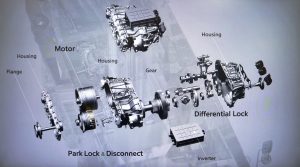
No indications of the power output were provided, but it is safe to say that it should be more than one quarter of the motor currently used, to allow for combat mass increase, many 8×8 reaching now the 9 tons per axle limit.
Safety issues and miniaturisation will certainly need to be addressed, the hydrogen fuelled platform about to start tests being a technology demonstrator, operational issues being therefore not top priorities. With hybrid propulsion becoming more and more used in military vehicles, the Hyundai Rotem research project deserves to be followed with attention.
Graphics courtesy Hyundai Rotem, photos by P. Valpolini

